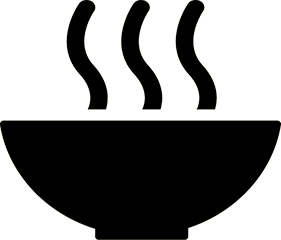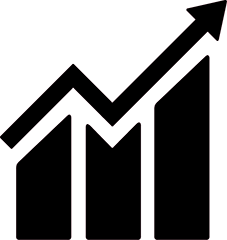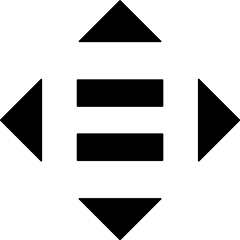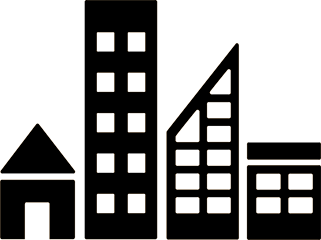UN Sustainable Development Goals Addressed
-

Goal 2: Zero Hunger
-

Goal 8: Decent Work and Economic Growth
-

Goal 10: Reduced Inequalities
-

Goal 11: Sustainable Cities & Communities
2020 Global Design Challenge Finalist
This design concept was developed by participants in the Institute’s Global Design Challenge. The descriptions below are from the team’s competition entry materials.
Location: Baltimore, MD, United States
Team members: Eesha Patne, Sasha Avrutina, Judy Chen, Eunsoo Kim, Hanah Murphy
Innovation Details
In response to the COVID-19 pandemic, the team that created MyOak Public Market asked “How might we cultivate a more connected and responsive food system network to ensure food access during times of crisis?” Inspired by the Chesapeake Forest in their own backyard, they designed a reciprocal online platform to increase food access for vulnerable populations as well as the economic potential of local food producers.
What is the problem you are trying to solve and how is it related to the united nations sustainable development goals?
Baltimore is a national leader in food system resiliency with established emergency response plans ready for disaster. However, economic disruptions and COVID19-specific public health mandates have resulted in unique challenges for traditional emergency food assistance programs. Within the first month of the pandemic, Baltimore emergency response coordinators reported almost one-third of the city were relying on food assistance- a significant increase from pre-COVID19 times. This number is expected to rise with further economic uncertainty. At the same time, grassroots efforts joined in an attempt to bridge the gap between hyper-local food needs, especially of those not covered by funded programs, and increased wasted food from shuttered restaurants and producers without access to supply chains. Additionally, the capacity of existing local producers to meet immediate food demand fell short of those in need. The sheer volume of emerging assistance requests and siloed production and distributions efforts- all while maintaining social distancing protocols- have resulted in uncoordinated and inequitable resource distribution. Beyond intensifying existing barriers for communities experiencing food insecurity, these circumstances highlight systemic issues of food access. This multifaceted problem echoes crippling issues outlined in several UN SDG Goals. Specifically working to achieve food security in this crisis relates to SDG Goal 2, “Zero Hunger”. In addition to responding to the immediate needs of Baltimore’s most vulnerable residents, there is an urgent need to support local producers’ ability to increase food production and strengthen local supply chains to ensure food security through any future crisis. These economic issues of food production and distribution directly address SDG Goal 8 by “promoting social cohesion and investing in community-led resilience and response systems”. By analyzing systemic issues hindering long-term resilience through a community-driven approach, this also aligns with SDG Goal 11, “Sustainable Cities and Communities” to cultivate an inclusive, resilient, and sustainable Baltimore.
What organisms/natural systems did you learn from and how did what you learned inform your design?
The symbiotic relationship between ectomycorrhizal fungi and the native white oak in Maryland’s forest ecosystem greatly informed this design. When the forest system is in relative , oak trees operate within social communities to cooperatively distribute water, nutrients, and even communication in the form of electrical or chemical signals. More established hub trees are particularly important as primary nutrient producers to support young saplings within the network. Our equity-centered design is informed by this movement of nutrients outlined by the source-sink model, where plants growing in high-resource conditions distribute nutrients to those growing in low-resource conditions. This resource sharing is facilitated underground by mycorrhizal fungi through their hyphae, the root-like filaments collectively known as mycelium. White oak trees have developed a relationship with a specific type of mycorrhizal fungi called ectomycorrhizae to facilitate these functions. Their hyphae connect to the tips of tree roots to form a physical connection known as the mycorrhizal network which serves multiple, reciprocal roles. Through this interconnected infrastructure, tree communities share water, nutrients, and communication- such as distress signals- while the fungi are provided sugar to grow. As the mycorrhizal network expands, hundreds of hyphae arrange to form singular units called rhizomorphs. These rhizomorphs secure and transport nutrients otherwise unavailable to tree roots, and are known to survive the harshest conditions. Beyond informing the symbiotic nature of our design, this well-functioning, self-sustaining relationship is also important for establishing resilience. In forest ecosystems, resilience to disturbances such as fire or disease is defined by biological diversity as well as functional diversity, where species perform similar roles such as production or decomposition. This level of ecosystem redundancy improves efficiency to maintain community health and sustain growth under distress. An understanding of this functional response to disturbances informed the adaptability and sustainability of our design.
What does your design solution do? How does it address the problem or opportunity you selected?
Emulating the symbiotic mycorrhizal network found in nature, MyOak Public Market exists primarily as a reciprocal online platform to increase food access to vulnerable populations and the economic potential of local food producers. Any resident within the Baltimore City food system can order food through multiple access points (online, by phone, in-person) for delivery at home or to their nearest community hub. In turn, the market provides an opportunity for a variety of potential vendors to sell fresh, prepared, and excess foods to a larger customer base than they might be able to access otherwise. This includes both a geographically wider customer base and more diverse customer segments through the acceptance of qualified food assistance program dollars. Ordered food is delivered and organized at a central site, then sent to community hubs throughout the city. These hubs are already identified through Baltimore’s emergency operations plan, utilizing existing infrastructure and activating these community spaces even in stable times. This strengthens relationships to better serve individuals experiencing food insecurity and support the emergence of hyper-localized production. Delivery is coordinated from the hub to consumers via in-person pick-up, contracted delivery people, or other neighborhood-specific mutual exchange. The market platform also aggregates data like order information, customer analytics, and user feedback to support food system assessments. Through the data-driven and community-led method, these assessments in turn inform quality food access programs and policies. Through the layered and diverse connections of the network, this concept is built to be responsive at multiple points to evaluate impact. MyOak connects food insecure individuals through multiple avenues to provide the adaptability needed to maintain communication and distribution through any disruption. Facilitating the connectivity of these diverse food system actors not only provides a level of system resilience but also sustains long-term economic capacity locally.


